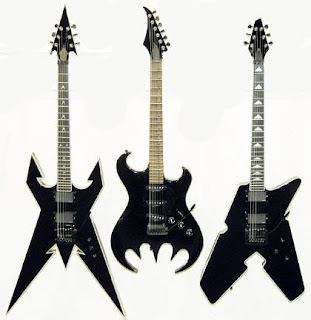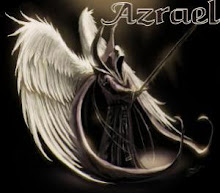Monday, February 20, 2012
Heavy Metal Guitar Basic Tutorial
Beginners at heavy metal guitar often have very limited techniques. Sometimes, all they can play are the introduction to one piece and that's it. Of course, if they play those chords repeatedly the whole day, they would soon get tired of the sound. It would surely come useful if they can get access to a resource that compiles common heavy metal guitar techniques.
How is heavy metal guitar different from ordinary guitar playing? It is usually characterized by fast rhythms and a handful of disparate harsh sounding chords. In this article, you will learn some common heavy metal chords. It will follow the usual fingering convention, that is, the index finger, middle finger, ring finger and the little finger would be labeled 1, 2,3, and 4, respectively. The six unfretted strings, which produce the pitches E, A, D, G, B, and higher E, will be identified as the first to the sixth string, respectively, with the first string being the bottommost, lowest sounding E string.
So as not to confuse beginners, we will avoid using too many technical terms. Let's start off with power chords. These chords are the primary chords that we use in heavy metal. We will use fingers 1 and 3. Finger 1 will be positioned on the first string (the lowest string) on the first fret, and finger 3 will be on the second string on the third fret. What you will hear is the F Power Chord. It's basically an F chord, with a dissonant sound coming from your positioned finger 3. You can move this finger setup across the fret board to produce different notes at different octaves. For variation and a more throaty sound, you can position finger 2 on the third string (D string) at the third fret. Include any of the three upper strings when you strum downwards with your pick. For practice, use the same finger formation and move one fret towards the body of the guitar, and then another fret in the same direction. Go back and forth along four successive frets, all the while maintaining the same finger formation.
Next, let's study the inverted power chords. For this chord, we will also use finger 1 and 3, however, finger 1 will be pressing the second string on the first fret, while finger 3 will be on the first string, third fret. It's basically the inverted position of the power chord, which is why we call it inverted power chord. This formation produces the G chord sound.
Although not as frequently used as the power chords, it breaks the monotony of the power chords. For practice, you can maintain the same finger formation and move one string up going one fret backward, that is, away from the body of the guitar. From this fret, use the same finger position and move back down one string. Follow this with a move to the next fret on the same strings, followed, again by a move to the next fret. Move up one string on the same fret. Go back and forth on these positions. These chords are used infrequently simply to give variety to your power chords.
Another type of chord that is used to break away from the power chord has a very throaty sound. It has a simple finger formation. Use finger 1 to press both the first and second strings on the third fret, and mute the other strings. You can also use finger 1 and 2 for pressing the strings, especially if you want to quickly create a similar sound by moving one fret either forward or backward.
Subscribe to:
Post Comments (Atom)




